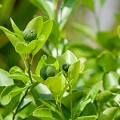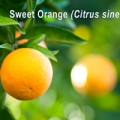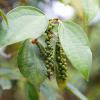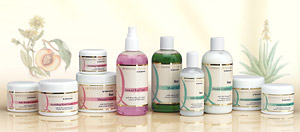Bitter Orange Essential Oil Profile
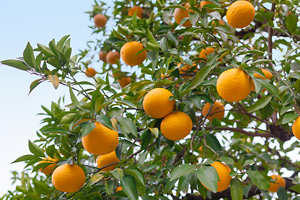 Although not quite as popular in aromatherapy as its sweeter relation, nonetheless Bitter Orange essential oil offers a wide range of health benefits to both qualified aromatherapists and home enthusiasts alike.
Although not quite as popular in aromatherapy as its sweeter relation, nonetheless Bitter Orange essential oil offers a wide range of health benefits to both qualified aromatherapists and home enthusiasts alike.
The essential oil is obtained from the peel of Citrus aurantium fruits which are acid-bitter, and therefore too sour to be eaten as out-of-hand fruit.
However, they are perfect for making an absolutely delicious marmalade that is eaten around the world. Bitter orange essential oil is still used to flavour a wide range of consumables including confectionaries, ice cream, chewing gum, soft drinks and liqueurs.
Until recently it was used extensively by the perfumery industry in perfumes and colognes. Synthetic fragrances are now used mostly in this industry.
General description
The bitter orange tree is a small evergreen that typically reaches a height of 3 metres (10ft) in cultivation, but may attain up to 6 metres (20ft) when growing in the wild. It has a smooth brown trunk, stout branches and flexible green twigs with rather blunt thorns, and a more erect stature and compact crown than that of the sweet orange tree (Citrus sinensis).
This plant has considerable tolerance of adverse conditions and can stand several degrees of frost for short periods, although it thrives best in subtropical and near-tropical climates. Bitter orange trees can reach a ripe old age, with some trees in Spain being reportedly over 600 years old.
The fruits of Citrus aurantium are round or oval measuring 7-8 centimetres across, with a thick, heavily pitted peel that turns from yellow-golden to orange-red on maturity. It comprises of 10 to 12 segments with a strongly acid pulp and numerous seeds, and like all citrus fruits the essential oil glands are found in tiny pits located within the peel.
Today, bitter orange trees are cultivated for the production of essential oil in several countries including Brazil, China, Dominican Republic, Guinea, Haiti, India, Jamaica, Mexico, Paraguay, Sicily, Spain, Taiwan and the West Indies.
Origins and folklore
It is believed that the bitter orange originated in South-East Asia, later spreading to North-Eastern India, Burma and China, and eventually finding its way via Arab traders to Africa, Arabia and Syria. From these regions it was taken to the Mediterranean by the Moors, and by the end of the 12th century it was cultivated in Seville, Spain, thereby leading to the common name for bitter oranges.
The bitter variety was the first orange to be introduced to the New World, finding its way to Mexico in 1568 and South America later in 1587. The sweet variety was unknown throughout Europe until it was introduced from India by Portuguese traders, eventually becoming the more popular choice.
Traditional uses
The dried peel of both bitter and sweet orange has been used in traditional Chinese medicine for thousands of years to treat anorexia, colds, coughs, digestive spasm relief and to stimulate digestion. The rind is both carminative and tonic, and the fresh rind is used as a remedy for acne. Bitter orange juice is antiseptic, anti-bilious and haemostatic.
In central and south America, China, Haiti, Italy and Mexico, decoctions of the leaves from C. aurantium have been taken internally as a traditional remedy to utilise their sudorific, antispasmodic, antiemetic, stimulant, stomachic and tonic properties. Some conditions treated with the leaves include colds, flu, fever, diarrhoea, digestive spasm and indigestion, hemorrhages, infant colic, nausea and vomiting and skin blemishes.
Citrus aurantium is an amazing tree that is absolutely bursting with natural remedies hidden within the fruit, flowers and leaves. And all of these therapeutic properties are available to everyone today in the convenient form of the various essential oils yielded from this wondrous tree.
Harvesting and Extraction
Unlike most other fruits, oranges do not continue to mature after picking, therefore harvesting must be done at precisely the right time if maximum oil levels are to be achieved. Bitter orange essential oil is obtained by cold expression of the rind, and yields orange-yellow or orange-brown essential oil with a fresh, fruity citrus aroma virtually identical to that of sweet orange.
Benefits of Bitter Orange Essential Oil
Although the therapeutic properties action of bitter orange essential oil are considered to be very similar to sweet orange, in my experience bitter orange appears more potent and often yields better results than the sweet variety. It is effective for the treatment of poor digestion, constipation and clearing congestion of the liver when used in massage blends.
The cleansing, stimulating and toning action of bitter orange essential oil makes it ideal to add to other lymphatic stimulants for treating oedema, cellulite or as part of a detoxification program. Varicose veins and facial thread veins respond well to this essential oil, especially when blended with cypress oil in facial treatments. Some aromatherapists have had success treating acne with this oil, perhaps due its antiseptic properties.
On the emotional system bitter orange essential oil is extremely uplifting and energizing for the body, yet calming to the mind and emotions. It is used in Ayurvedic medicine as an aid to meditation, and this is perhaps why it can be extremely helpful in easing stress and anxiety. Diffusing bitter orange oil is said to help dispel tantrums and frustration for both adults and children alike!
Browse Quinessence Bitter Orange Essential Oil
Copyright © Quinessence Aromatherapy Ltd 2022.

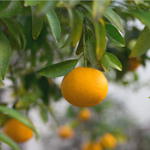 The strong green twiglets and broad, ovate, glossy evergreen leaves of this species also contain significant quantities of essential oil which produces petitgrain oil by steam distillation.
The strong green twiglets and broad, ovate, glossy evergreen leaves of this species also contain significant quantities of essential oil which produces petitgrain oil by steam distillation.